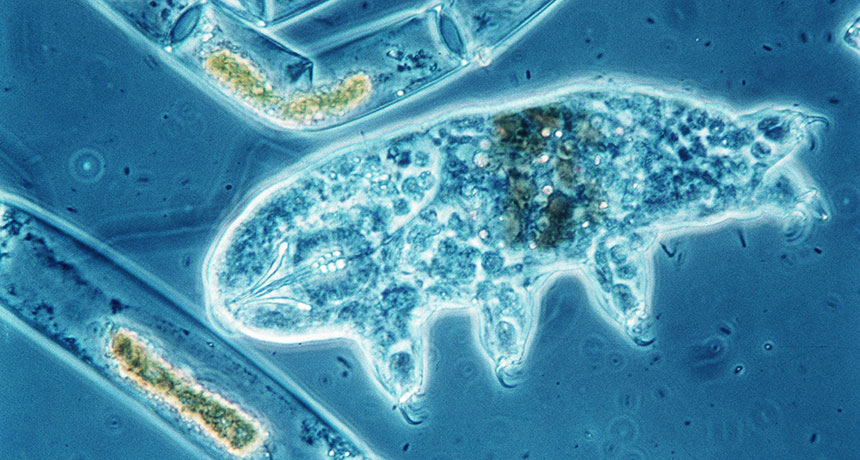For water bears, the glass is all full
When they dry out, tardigrades protect key body bits with orderly proteins

LIFE’S A GLASS Water bears, or tardigrades, make proteins that turn into glass when the microscopic animals dry out. The glass preserves other proteins.
blickwinkel/Alamy Stock Photo






